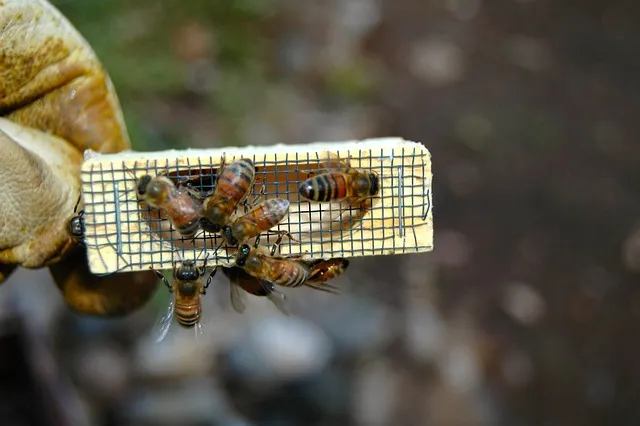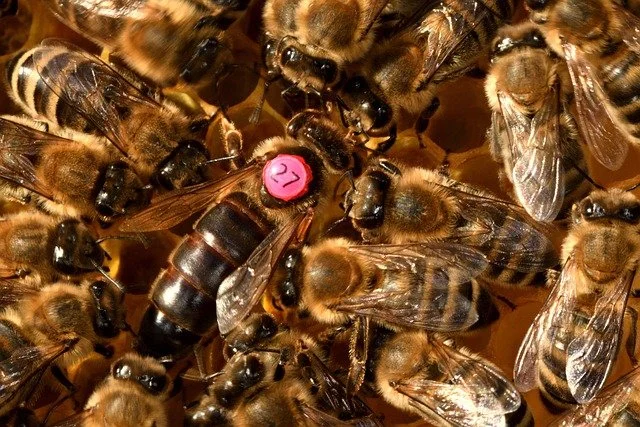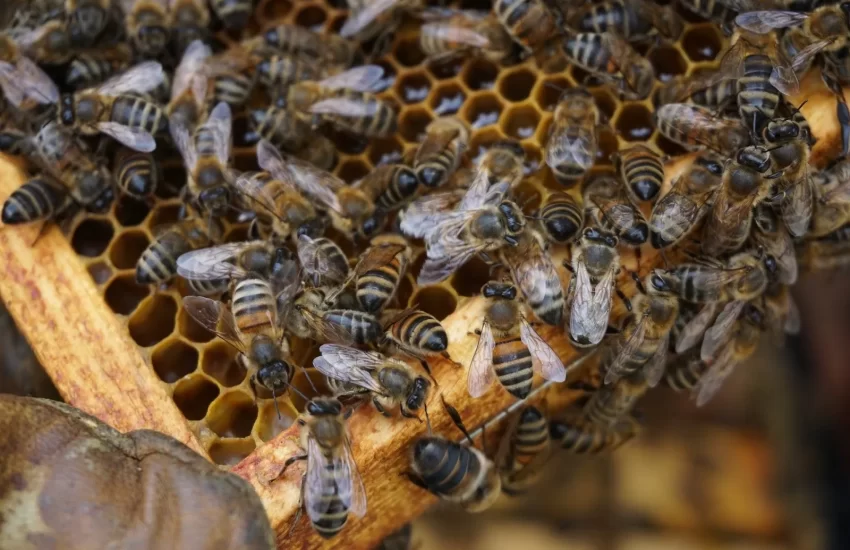Can a hive live without a queen? How can you tell a Queenless hive?
A queenless hive is a wretched hive. Worse still, it can be challenging to detect since the effects of queenlessness are not instant. It can look quite okay, especially to novice beekeepers who have not fully grasped the art of beekeeping. The foragers will be flying in and out as usual and bringing their loads of food. Comb building and honey-making operations will not halt. However, with time effects will be notable. Unfortunately, queenlessness is one of the common ways that beginners lose their hives. A queenless colony can be saved if a beekeeper realizes it on time. A colony without a healthy, productive queen can also die out anytime.
Similar Articles you may like to read –
Can a queen bee hurt you? What happens if a queen bee stings you?
Do I have to buy a queen bee to start a beehive?
How much money is a queen bee worth?
How many queen cells should you leave?
Can a hive live without a queen?
A bee colony cannot survive for long without a queen. While she cannot live or maintain a colony alone, her role cannot be overstated. The hive requires a healthy queen to remain productive and the population to be at its peak. Without her, the population diminishes until there are not enough workers to continue. Fortunately, most colonies are able to replace a failing or dead queen on time. It is advisable for every beekeeper to perform regular checkups to know the health of the colony, including the queen.
How long can a hive last without a queen?
A bee colony will only survive for months without a queen based on the worker’s lifespan. Workers live for an average of 6-8 weeks in the active months. The time it takes for the population to dwindle depends on the health and strength of the colony at the time of her loss. A weak hive will live for a shorter duration than a strong hive. After the adults complete their life cycles, the colony will be gone.
Is there a queen in every hive?
Yes, there is one queen in every hive. She is the only mated female who helps replenish the hive’s populations. She has fully developed reproductive organs, and her key role is to lay eggs. Honey bees have short life cycles and need to be replaced over and over to maintain a healthy colony. A colony contains 50000-80000 bees.
What happens if there are two queens in a hive?
Queen bees do not tolerate each other. It is usually a battle of the fittest for the virgin queens to take over. When workers want to replace an old or failing queen, they use a number of queen cells to raise. The first queen to emerge kills all other unhatched queens. If two queens emerge at the same time, they fight to the death until one wins. However, the new queen may not kill the old one. If she doesn’t kill her, the workers will eventually sting her to death. Although they can stay in the same hive for some time, it is short-lived.
How can you tell a Queenless hive?
Missing Eggs and Brood
The queen lays thousands of eggs every single day. These take three days to hatch. In a queen right hive, you will find eggs present and all stages of brood development. If you find eggs in a hive, this is an indicator that the queen has been present in the last three days. If eggs are missing, the hive might be queenless. Novice beekeepers are always advised to look for fresh eggs in every inspection. However, in seasons of nectar shortage, egg-laying operation is reduced.
Presence of Queen cells
If a queen goes missing in a colony, the workers will act fast in a bid to replace her. They will make emergency queen cells and use the eggs or larvae that are available. If the queen cells are coupled with a lack of brood, most likely, the colony is queenless. A beekeeper should learn to differentiate emergency, swarm, and supersedure queencells. It is not always that a colony succeeds in raising a queen. Again, the colony may succeed and she gets preyed on her way to the mating flights. The presence of queen caps alone notifies you that the colony lost a queen and wanted to replace it, but there were no available larvae.
Increase in honey and pollen Stores in Brood Cells
If a hive is queenless, there will be no brood to take care of. The house bee workers will join with the foragers to collect food resources. They will even store honey in the cells used to raise the brood. More honey stores with little or no brood is a signal that the queen is absent. The worker bees may fill all the empty cells with food resources. Queens usually reuse brood cells to lay eggs.
Decrease in Population
An average hive has 50,000 to 60,000 bees. The worker’s bees die daily, and the queen works hard to replace them by laying a large number of eggs. As you carry inspections you are used to what is normal in your hive. A significant drop in the number of bees could be an indicator the queen has been missing for weeks.
More articles you may like to read –
How to Identify the Queen Bee
How to requeen a beehive? When The Queen Dies
Do bees leave the hive if the queen dies?
Why do beekeepers remove the queen?
Substantial Increase in the Number of Drones
One role of the queen pheromones is to suppress the reproductive organs of the workers. If the queen is missing, the workers may start to lay eggs. Since they are not fertilized, the egg hatch into drones. When workers are laying, you find multiple eggs in a brood cell.
Colony Becomes Aggressive
A queenless colony often gets irritated and nervous. Since it is a dangerous season in their lives, they do not welcome interference. However, other factors, such as changes in weather, and nectar scarcity, can also cause changes in temperament. Queen pheromones help keep a bee colony orderly and cohesive.
The normal Buzz Changes to Queenless Roar
As you spend time with the bees, you become aware of their sounds. A queenless hive gives out a queenless roar which is an intensified buzz or a high-pitched whine. The sound is quite different from the regular bee buzz. Familiarity with sound can help you to realize when a colony is queenless.

How can l test for queenlessness?
If unsure whether your hive is queenless, there is a sure way you can test. The first way is by providing the colony with a bee frame containing an open brood and checking after two days. The bees will start making emergency queen cells. If there are no queen cells made, the queen may be around. The second way entails placing a caged queen on top of the frames and waiting to see the bees’ reaction. If queenless, they will stream toward her fanning their wings. They will be aggressive toward the caged queen if their queen is present. They will try to bite and sting the cage.



